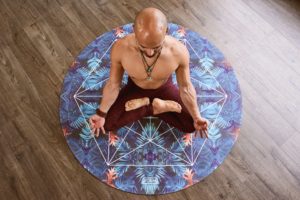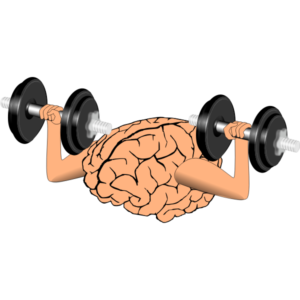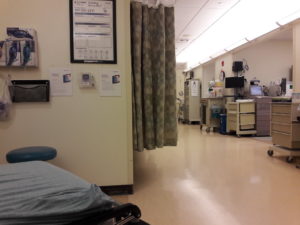A few weeks ago I have a rounds presentation to my ER colleagues here in Toronto. The topic was “Mindfulness Skills for the ER worker”. In other words, why people who work in the ER should meditate.
Really, even with an ER focus, this applies to everyone in medicine and beyond.
Upon some reflection, I thought it might make a nice post, so I’m summarizing my talk for you. I’d love to know what you think!
Imagine….
It’s the middle of a night shift and the charge nurse tells you that EMS is 4 minutes away with a flat 2 week old in cardiac arrest. Your team and equipment is assembled but you notice a knot in your stomach.
You can feel your heart pounding.
Some sweat forming on your brow.
You haven’t done a neonatal resus in a long time and you are feeling very stressed. You notice the thought “I hope I don’t screw this up.” You think your response might keep you from performing optimally.
What can you do in the next two minutes to help you re focus on the task ahead?
It’s the end of that same shift and you find yourself at home.
You’re unable to sleep and replaying the scenario over and over in your mind. You wish you could put your thoughts to rest and find a sense of relaxation. What can you do?
So why I am writing about this?
Well, you have heard of mindfulness. It’s permeated its way into the main stream. You’ve seen it on the cover of Time magazine and the like.
Has anyone ever tried to meditate?
The practice of mindfulness and meditation has had a huge impact on my own personal life. And I think it’s an important, practice-changing tool.
How did I start meditating?
I was introduced to meditation the summer before medical school when I was an over anxious, SSRI-taking, too hard driving and struggling undergraduate student.
I took an eight-week meditation course. Basically, I met with someone every week that guided me through a meditation, and then I was to listen to the meditation each day until the next week. Initially, I was very skeptical and reluctant to do it. I didn’t believe in this kind of stuff at all.
But, I gave it a chance. After a few weeks I noticed that it made a huge difference in my life. Over time, I was starting to internalize some of the things that I had been practicing. Towards the end of the course it was clear that I feeling calmer, happier, and less caught up in what I was feeling. There was clearly something to this and I decided to keep practicing.
That was seventeen years ago.
And now I sit, every day, for about 30 minutes. Additionally, I try to spend 1-2 weeks at a retreat in silence. I find that a retreat gives me a huge mental boost that lasts for weeks after a retreat setting.
So, I thought I’d share some of what I’ve learned. More importantly, I’m here to teach you a method in which you can learn a little bit more about yourself.
That’s really the point. By paying attention to what is happening in your mind and body, in the moment, you can learn about patterns of thought and feeling that are frequently occurring in your day-to-day life. Patterns that may be holding you back from being your best and happiest self.
What’s the deal with meditation?
I’m sure that many of you in the medical field look at the topic of meditation and think of something like this….

And you probably think
“what is the point of learning this soft, new-age, pseudoscience, touchy-feely, mystical-schmistical, b.s.???”
And that’s fair. The mindfulness world doesn’t always do a good job of promoting itself in a straight-forward manner.
But for today, I’d like to take some of the misconceptions out of the practice.
For one. You don’t need to sit cross-legged in the lotus position, you don’t need to take your shirt off or have any magic crystals, incense, or really any specific belief.
Meditation is a science-based practice. It has a lot of strong evidence demonstrating its benefits.
It requires no specific belief structure or faith. Sure, it is absolutely a large part of many religious and cultural institutions. But in order to get the benefits of meditation you simply need to do the practice. You can believe (or not believe) anything you want.
Meditation is a much more practical tool than most people think.
I’d like to think of it as more like “bicept curls for your brain”.

Or, in other words, systematic mind training.
We know about the concept of neuroplasticity. Our brains (and minds) have the capacity to change and we strengthen the circuits that we continually practice.
It’s a lot like exercise. By systematically training your brain to focus on your direct experience, and repeating that practice over time, you will strengthen neural circuits in many important ways. With practice, this seems to have a noticeable impact on how you feel and how you experience your days.
Evidence
Impressively, you can start seeing effects after a short period.
After an eight week course in mindfulness (Mindfulness Based Stress Reduction), participants had measurable changes in their brains noted on MRI. This means that through the practice of mindfulness, you are literally training your brain to function better.
After just these eight weeks, there were was more grey matter noted in the prefrontal cortex (related to meta awareness and reappraisal), the sensory cortices and insula (related to body awareness), the hippocampus (related to memory processes) and the cingulate cortex (related to self and emotional regulation).
More interestingly to me, the researchers noted less grey matter in the amygdala – our emotional processing centre. So along with people “feeling” like they had a lot less anxiety after a trial of mindfulness, they actually have a decreased ability to produce a stress response.
Now, that is pretty compelling evidence if you ask me. But has it been looked at the in ER environment? Yes!
ER studies
1. (link) We know that emergency practitioners – doctors and nurses that practice mindfulness tend to experience less stress in their environments – in this study, people with better mindfulness skills had symptoms of anxiety, depression and burnout.
2. (link) ER nurses with improved mindfulness skills and empathy skills in their work environments were able to experience less emotional exhaustion – we talk about burnout and compassion fatigue, this can really help with that.
3. (link) Not only can it make you feel better, but the practice of mindfulness can improve your ability to perform in a stressful moment
In this study two small codes teams were split with one learning mindfulness skills 14 min/day for four weeks.
After the four weeks the two groups were followed in real world and simulation settings and the mindfulness based group showed improved scores in emotional regulation and teamwork. As well, subjectively people felt like it had a significant impact on how they performed.
“I definitely think it was beneficial. … I felt more clear in code situation. … You can kind of process everything a little bit better. … My mind felt clearer.”
(Female, RN, 7.5 years’ ICU experience)
I particularly like the discussion of how important it is for us not just to train in technical skills, but also in non-technical skills. Even in a high-pressure resuscitation situation we need to pay attention to what is happening around us and inside of us (negative feelings can impact our decisions making). These are critical skills that have measurable impacts on our performance.
4. (link) Finally, Scott Weingart and colleagues took it one step further and essentially said that we can use mindfulness as a performance enhancing drug. If you take a look at one paper, I’d say this one should be the one you review.
He talked about four key skills. Breathing. Visualization. Positive Self talk, and focus words such as repeating “smooth”, or “I got this” during a resus.

How do you deal with stress? Often times, we deal with our stress by removing ourselves from stressful environments. For instance, we take time off, exercise, talking to our colleagues, taking part in hobbies.
What mindfulness allows is an opportunity to examine and deal with our stresses as they occur, in the moment. By doing this we lessen the impact that acute stressors have on us and we are better able to react and perform during stressful situations.
These techniques are not just useful for monks on a mountain somewhere. They are used by the military, by navy seals, high-performance athletes, and pilots. Doctors stand to benefit greatly by practice and use of these techniques as well.
ER docs and burnout

We need this in our practice. We know our jobs are hard, and we know they’re stressful. That’s not going to change..
The evidence shows that Emergency physicians experience burnout more than 3 times that of an average physician.
In a survey study of 3000 physicians, 65% of ER physicians experienced symptoms of burnout (38% in general physician population and 27.8% in general non-physician population).
Meditation is not a cure for burnout, but I like to think of it as a balm. It can certainly soothe those symptoms as they occur and prevent them from overwhelming you.
Also by paying closer attention to how you feel, you can be alert to symptoms of burnout a bit earlier. Learning more easily when it’s time to step away for a moment.
Given the burden of burnout in our physician population, we need to consider tools to help us deal with how we are feeling.
“It’s not a cure all.”
Mindfulness is certainly not a panacea. Although I’m a strong advocate for using this as an adjunct to our practice, it’s not going to fix all of our problems in medicine.
We will still have overcrowding in the ER and are going to have to deal with things that we don’t like. Meditation won’t keep patients from being difficult from time to time. This isn’t a cure, but it’s a tool that can improve your experience. What you choose to do with that tool is up to you.
I hope now you can see that it’s a tool with some pretty significantly measured benefits.
“It’s too hard.”
Yes, meditation is a difficult practice, especially at the beginning.
Yet, the instructions are easy. It can be as simple as “pick something to pay attention to (breath, sounds, feelings) and keep your attention there.”. Of course, actually doing the practice can be a real challenge, as anyone who has tried to sit still for more than five minutes can attest to.
It gets easier and more pleasant with time. That, I can assure you.
When you do this practice you are not going to experience instant peace or enlightenment, sadly. You’re building a skill. It takes practice and you’ll need to repeat the practice dozens, hundreds, or thousands of times.
You’ll discover early on that your mind has a tendency to wander. It’s hard to shut off the voice in your head and rid yourself of distractions. This is normal for everyone. Even realizing how little time you spend fully present, and how frequently your mind wanders is a valuable thing to learn.
“I’m no good at this.”
There is no wrong way to meditate. The effort is the meditation. It can feel like torture at the beginning. This is also normal and you can learn a lot about yourself by paying attention to what happens when you try and sit still even for a few minutes. Slowly bringing yourself back to your object of focus is the work. Like the bicep curl analogy, you are slowly building the skill of returning to the present moment. Your brain then learns to do this more easily over time.
Like exercise, not all days are good ones. Some days you’ll have more energy and skill than others. But like exercise, doing the work each day is still building the skill. It’s best to think of this as a skill you are cultivating.
“Microhits”

If you’re feeling like you’re too busy to meditate, there are often many opportunities to pay attention to your ongoing experience. Even a brief thirty-second break in the middle of your shift can help break up patterns of thought or feeling. In my days, I find many little moments to pay attention. Simple things.
For example, when I get out of my car in the hospital parking lot, I pay attention to the weather outside and how the air feels on my face. I then pay attention to the feeling of my feet as a walk towards the emergency room. During my shift, I’ll spend a little extra time washing my hands and feeling my hands moving over each other. Sometimes I’ll just spend a few moments listening to the sounds of the ER, trying not to analyze them, but just soak it in a little bit.
At the end of my shift, I often spend a brief moment reminding myself of one person I helped today.
My ultimate goal
Overall, if I could state what my ultimate goal with all of this is, it would be to train more ER doctors (and docs in general) to meditate. This is an opportunity to help us reshape our brains. By doing so, we change our relationship to what we feel and what we experience.
By training yourself to be more present, you can experience less rumination and learn to get yourself out of an autopilot mode and into a mode where you can act more intentionally.
In this mode, you might experience less anxiety, greater clarity and improved focus. You’ll react better to stressful situations and be able to respond in a more appropriate manner. There might be a greater overall sense of well-being.
In my own life, I feel as if I enjoy my job more when I’m able to be more present with what I am doing each day. I’m happier and have become a more optimistic person. I’m thankful of what this practice has shown me about myself and I encourage you to take the challenge up for yourself. You may not get all of the benefits I’ve experienced, but I ensure you that you won’t regret the effort.
Want to learn more about HOW to meditate. Look here.
Have you ever heard of the pause? You should be incorporating it into your ER practice for sure. Read more about it here.
Want to practice something simple? Here’s a simple meditation courtesy of youtube and Sam Harris

